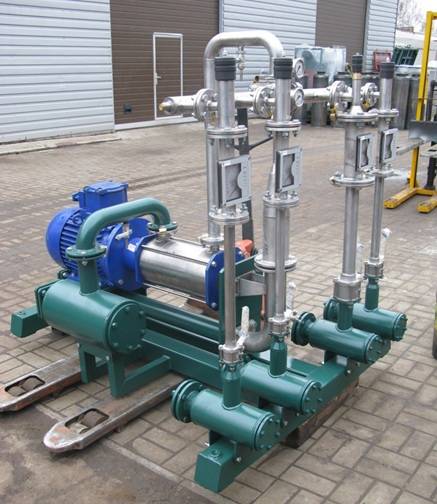Nowadays much importance is placed on the problems of energy saving and environmental safety. In particular, these issues are of great significance while servicing fuel equipment.
The water-fuel emulsions are proved to contribute to conservation of fuel and energy resources and improve environmental conditions. The water-fuel emulsion may consist of different components such as:
(1) water – fuel oil;
(2) water – diesel oil;
(3) water – gasoline; and
(4) water- fuel oil – coal dust.
Water that has entered into fuel oil during transportation, storing or warming up increases its viscosity and it may have negative consequences. But properly prepared water-fuel emulsions makes it possible to achieve good results.
Often, the content of water in fuel oil exceeds the admissible limit value (12-16% instead of 1.5 %). It may be difficult to separate water from fuel by sedimentation as density of water and fuel oil are almost the same. Water does not settle to the bottom of the container and distributes unevenly in the diesel fuel. As a result, the flame is disturbed, the injectors go out slowly and sometimes it may be troublesome to fire the injectors.
Restarting of the boiler units can cause strong puffs and damages because of accumulated combustible gases. The regulatory documents state that the water content of the fuel oil that is to be burnt must be 0.3 -1 %.
According to the traditional technologies, there are only two procedures of fuel oil preparation: dehydration and heating. Water expulsion is an energy-consuming process that leads to the loss of fuel volatile components.
As previously mentioned, sedimentation is time-consuming and does not provide a desirable effect. It is not reasonable to apply chemical or biological methods since they require additional areas, operational and financial expenditures.
The fuel oil emulsion combustion provides for substantial economic effect, improves boiler’s efficiency (3-5 %) and reduces the amount of harmful discharges into the air.
The significant cost savings are possible when adding 10-15% of water into the fuel oil. More than 20 % of water in the emulsion will lower the quality of the combustion process. But it is desirable to increase the water content with a view to the waste water disposal. If to increase the water content in fuel oil emulsion up to 50 %, there may be observed some positive environmental impacts since waste water is the main component of the fuel oil emulsion.
The use of homogenized fuel oil emulsion allows for fuel saving, reduction of such discharges as NO x and CO x and improves the quality of the fuel combustion.
How are these effects achieved?
The atomizer disperses fuel oil that is supplied to the burner. The size of the droplets should be 0.1 – 1 mm. If there is water in the droplets, it will turn into vapor when heated. The dispersion of the fuel, being supplied to the burner is increased due to the breakdown of the fuel oil droplets.
Additionally, the fuel and air contact area is extended that will lead to the improvement of the fuel-air mixture quality. The homogenized fuel oil emulsion is less viscous than fuel oil, which makes the fuel transfer process much easier.
No less important factor that weighs in favour of fuel oil emulsions is that they benefit the durability of the fuel firing equipment.
How to achieve all these effects?
The answer is simple – just to make finely-dispersed and non-segregating fuel oil emulsion. GlobeCore has developed and is still producing the USB units that contribute to the fuel oil emulsion production. They are designed to blend liquid petroleum products such as fuel oil, diesel oil or stove fuel with additives and water. The USB units are equipped with high-accurate electronic control system that ensures the precise metering of components.
The ready-made emulsions can be applied in any heating equipment and stored during a long period of time without settling.




